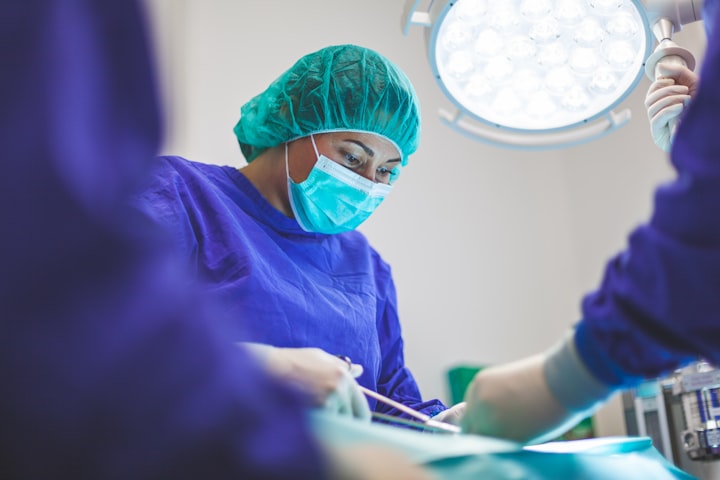
The liver is a vital organ located under the ribcage on the right side of the abdomen, on top of the right kidney. Its main task is to filter blood from the gastrointestinal tract. It helps assimilate food and chemicals. It synthesizes essential proteins such as albumin and removes toxins and waste products. The liver can amend when damaged, but chronic liver damage leads to liver failure. If liver damage does not get proper treatment, it causes severe damage. Viral infections, medications, excessive alcohol consumption, or a genetic condition may cause liver damage.
Here are the early signs of liver damage:
Abdominal swelling
Abdominal swelling is one of the early signs of liver damage. The bumping of the abdomen is because of the lowering of essential proteins in the blood, the proteins that cause fluid to leave the vessels and collect in the abdomen and other body cavities. An increased pressure in the vein that carries blood from the digestive organs to the liver may also cause abdominal swelling. Although a damaged liver can regenerate or compensate, the size and shape of the organ may modify. These modifications result in the enlargement of the liver and cause an increase in the size of the abdomen. The last stage of liver damage or hepatic cirrhosis may also cause the abdominal cavity to swell.
Swelling in the legs or ankles
Damaging the liver may cause fluid to spread in the leg and ankle area. This buildup is because of a deficiency of a blood protein that controls fluid from leakage into the tissues. The legs and ankles become affected because fluid moves under the influence of gravitational pull: down toward the feet. The end-stage of liver damage can cause swelling of the body.
Changes in appetite
Bile production gets slow if the liver is damaged, and its lower concentration causes difficulty in metabolizing the fats in the meal. A damaged liver has difficulty digesting proteins and fats from food. In addition to this, if liver damage is of a severe type, the vessels in the esophagus and stomach may dilate. In some cases, the dilated vessels may leak, and it is a medical emergency. People with severe liver damage may experience nausea, vomiting, and loss of appetite.
Changes in urine color
Dark orange, brown, or cola-colored urine might be a reason for liver damage. Changes in urine color are an early sign of liver damage to get noticed and take precautionary measures. The color of the urine becomes darkish if bilirubin is building up too much by the kidneys, and the liver is not able to break it down. Tea-colored urine is an indication of acute liver disease and requires emergency medical treatment.
Changes in bowel movements
Digestion slows down when the liver works hard to perform its functions properly. The level of toxins increases, and the body tries to compensate for it by excreting them in the bowels. This excretion leads to severe constipation or diarrhea. The bilirubin that causes a change in urine color may also change stool color and give it a brown appearance.
Difficulty concentrating and fatigue
Difficulty concentrating and fatigue is another indication of early signs of liver damage. To carry out its various functions, a damaged liver has to struggle more which may lead to concentration problems with fatigue. The main reason is that the liver filters out toxins more slowly than normal. A damaged liver has to work hard to absorb the required nutrients which causes feelings of exhaustion. Progressive liver damage can cause brain damage or hepatic encephalopathy due to high levels of toxins in the body.
Bleeding or bruising
The liver is responsible for the formation of blood-clotting proteins. A damaged liver finds it difficult to produce those proteins that cause increased bleeding and bruising. Further complications may occur after the composition of a new blood vessel to bypass the damaged organ. These blood vessels mostly form in the esophagus and stomach and begin to swell. Swelling causes critical bleeding because these vessels are prone to rupture, especially if blood clotting factors are compromised. Vomiting blood and black stool are signs of bleeding in the esophagus or stomach and require immediate treatment.
Increased blood pressure
A damaged liver can block blood vessels, so blood cannot flow properly throughout the circulatory system. The condition creates pressure on the blood vessels around the liver and causes portal hypertension; named after the hepatic portal vein that is the main vessel providing blood to the liver. High pressure thus causes veins to swell in the esophagus, stomach, and rectum area. Swollen veins may rupture and cause bleeding, thus resulting in severe complications.
Increased liver enzymes
Increased liver enzymes are a result of severe damage, but it may not appear in every person with acute liver damage. Liver damage shows an increased level of liver enzymes in the bloodstream, which is an indication that the organ is under attack from inflammation, toxins, or viruses.
Skin changes
Liver damage can cause hormonal changes that, in turn, cause the dilation of small blood vessels. It creates spider veins that are most noticeable on the face and legs. Some common symptoms include a blotchy redness of the facial skin, palms, and feet. In advanced liver damage, jaundice happens due to the building up of bilirubin in large amounts and not being metabolized by the liver because of its poor functionality. However, bilirubin can be elevated in other medical conditions as well.
Disclaimer: The story has already been published on other platforms.






Comments
There are no comments for this story
Be the first to respond and start the conversation.